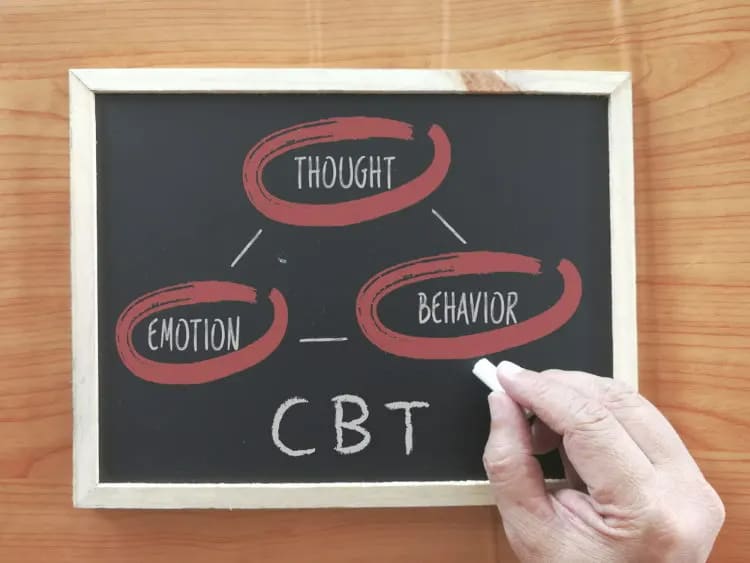Whether you decide to see a therapist face to face or online, you may be surprised to find how many different types of therapy that are available to you.
While some therapists adhere to one type, others are more eclectic in their approach. Therapy can be done individually, with your partner or family, or within a group setting, and there are many schools of thought about which therapeutic approach is best.
What is Online Therapy?
Online therapy is a way to get professional mental health help via video calls, texting or emails.
With the growth of the internet, more people have been choosing virtual meetings with therapists or psychiatrists over in-person sessions.
Advantages of Online Therapy
Taking this one step further, professional therapists have combined this rewarding approach with the
benefits of online therapy for increased results and user satisfaction. Online therapy has several advantages over traditional in-person therapy, including:
Convenience
Traditional therapy requires you to make an appointment with a busy therapist, travel to an office, sit in a session, and travel back when it’s done. This can be time-consuming, frustrating, and inconvenient for many people. Online therapy alleviates all of this. Schedule your appointments whenever is good for you. You are able to conduct your sessions in a convenient place and get right back to whatever you were doing before it was over.
Cost
Online therapy is a fraction of the price of regular therapy. If you are going to want to work with a therapist for several weeks or even months, it is nice to have the affordability of a qualified online therapist.
Learn more about the Cost of Online Therapy here
Availability
Online therapists are available 24/7 to chat. Send me a message when you have something on your mind and you and get feedback when the therapist checks in. It’s an invaluable resource to be able to send a message to your therapist whenever you’re feeling the need rather than having to wait a week until your next session.
Your Therapy, Your Way
Whether you’re interested in face-to-face therapy or want to try out an online therapy service, here are the 10 different types of therapy you should know about before you get started:
1. Dialectical Behavioral Therapy
Dialectical behavioral therapy is an evidence-based talk therapy in which the therapist must be specially trained. It is a type of CBT, but is more specific in that it often deals with clients who are facing some more extreme emotional reactions or who might be impulsive.
DBT helps the client learn how to manage and change unhealthy behaviors and it works well with people who have been diagnosed with borderline personality disorder, eating disorders, addictions, and thoughts of self-harm or suicide. DBT includes homework in between sessions while focusing on managing the more immediate emotional trauma.
2. Humanistic Therapy
Humanistic therapy is talk therapy based on the notion of being your true self and that everyone has a unique perspective in terms of how they see the world. It makes sense intuitively because it is true: Each person does see their world distinctively and in their own way.
Using this approach, a therapist looks at a person’s whole self and tries to focus on the present rather than the past. It is a more generalized approach that characterizes several notions that adhere to the idea that people have the strength to make their own decisions; and with empathy and support, they can. It is a more nurturing and gentle approach to therapy and works well for many people.
3. Psychodynamic Therapy
Psychodynamic therapy is primarily focused on 4 life factors: thoughts, emotions, beliefs, and one’s early life experiences. With your therapist, you examine the repeated patterns in your life and examine unconscious processes as they exist in present behavior. This helps one to figure out the core of the problem to make changes in the present. Psychodynamic therapy can be short or long term, and it can be done individually or with couples, families, or groups.
4. Narrative Therapy
Narrative therapy focuses on the client being an expert in their own lives. It focuses on the stories (or narrative) that one creates as life moves forward and the meaning that the experiences have as they influence behavior.
Therapy is focused on these stories and how people make sense of them in terms of values and ability to face the problems that are currently going on. It is non-blaming and interactive. Narrative therapy tends to be less defined and looser than some other forms of therapy. It is used to treat depression, bipolar disorder, anger, problems around divorce/separation, and anxiety. It is more commonly used with adults, children, and families.
5. Attachment-Based Therapy
Attachment-based therapy is an effective type of therapy, and it’s not just for treating attachment disorders, though it can be extremely relevant in these cases. Attachment begins in infancy and those who fail to attach to a caregiver or family member often have difficulty establishing relationships throughout their lives.
This work can be done with children and adults, face to face or online, and promotes healthy ways to form attachments depending on the age of the client. It is quite different depending on age and requires someone who is specialized in attachment theory. This is especially critical for children who were unable to connect early on.
Want to improve your marriage? Try These Top Online Couples Counseling Services
6. Motivational Interviewing
Motivational interviewing (MI) is a short term, evidence-based therapy that supports people in resolving things that keep them from making healthier decisions about their lives. This approach works well with those struggling with addiction and problems related to physical health. Like most therapies, MI is empowering and encourages clients to find their own ability for change.
MI therapists are helpers in the change process as they encourage their clients with directives hoping they will respond with motivation and the will to change. It works well with individuals and can be done face to face or online. Oftentimes, MI is the first type of therapy for clients who then go on to explore other types as they dig deeper into other areas of their lives.
7. Family Systems Therapy
Family system therapy is a form of psychotherapy that can be done with individuals or families. The premise is based on resolving issues from the framework of the family unit, of which many of the problems stem. Whether doing this work alone or with other family members, it is essential to understand the core underlying concept of what happens to one family member happens to all members.
Members might react differently to the experience, but the incidents cannot be ignored. The family systems approach can work when treating personality disorders such as bipolar, anxiety, depression, and addiction, and it can be done online or face to face.
8. Eye Movement Desensitization and Reprocessing (EMDR)
Eye Movement Desensitization and Reprocessing (EMDR) is a type of psychotherapy that is often used to support people who have experienced various types of trauma and post-traumatic stress disorder/PTSD. EMDR must be done by a professionally-trained therapist and it has success with children and adults.
Sessions typically runs 60 to 90 minutes and is focused on one’s memories, emotions, and core beliefs. It involves the therapist using finger movements, vibration, or auditory oscillation to tap into certain experiences to change thoughts from being disturbing to more positive. This is a very general explanation and should be researched much more thoroughly if of interest.
9. Interpersonal Therapy
Interpersonal therapy is what many think about when the word “therapy” comes to mind. The main goal of this type of therapy is to learn to communicate better with others. It is often done individually or in a group setting.
You can choose this type of therapy if you want to focus on building or strengthening relationships, or when you need to reflect on your own behavior patterns and how those patterns might impact certain relationships they have in your life.
10. Cognitive Behavioral Therapy
Cognitive behavioral therapy (CBT) is short term, problem solving-based talk therapy that is straightforward and common. CBT focuses on the present rather than the past and your therapist will teach you how to replace negative thought patterns and behaviors with those that are more positive. It is goal oriented and there is usually homework involved because practicing new behavior patterns and thoughts helps with the application and reinforcement of what is learned during each session. CBT is effective in treating conditions such as depression, anxiety, PTSD, some phobias, sleep issues, and substance problems, just to name a few.
Cognitive Behavioral Therapy Online Explained
Cognitive behavioral therapy is goal oriented, takes a problem-solving-centered approach and can be done in an online setting. The aim is to help you change your pattern of thinking and/or behaving. Success using CBT takes a great deal of work from the client. Here is a common CBT model:

In this model, some situations trigger a thought. Let’s say, a dog barks loudly. What follows is a thought, ‘That bark is loud, I’m in danger!" The ensuing emotion is fear, combined with a physical reaction of sweating, trembling, or weak knees. Finally, the behavior that results from this chain reaction is to run, cry out, or seek assistance.
According to the CBT model, it is not the stimulus that is causing your reaction, but rather your thoughts. The behavior can more easily be modified by addressing and changing the initial thoughts since this is the first stage in the chain reaction that leads to undesirable behavior. By changing the way we interpret the trigger, we can eliminate the behavior entirely. This is the methodology and the goal of cognitive behavioral therapy.
When CBT Is Your Best Option
Cognitive behavioral therapy is proven to work with a wide variety of mental health issues. It is extremely well-suited for situations where you:
Have phobias that you want to get rid of
Have undealted with the emotions you want resolved
Are looking for skills and practical strategies that you can use in many areas of your life
On the other hand, CBT is not a good option if:
You aren’t committed to doing the work
You have a complex mental health disorder
You aren’t ready to face or deal with your issues
Bottom Line
These approaches are not all-inclusive or illustrative of the various forms of treatment and just present a brief description about the premise of each. There is some overlap among them, and when choosing what is best, it is important to do more research.
There are many ways to learn about the various treatment options prior to beginning therapy. Talk to people you trust and if possible, explore what has worked best for what you are hoping to accomplish. This is the same approach when deciding whether to attend therapy face to face or online.
Taking this step is amazing and critical for your self worth, self care, and self improvement to blossom.
You may also like:
Top 10 Hacks to Get the Most Out of an Online Therapy Session
Top 10 Steps to Spot and Accept a Situation You Can't Change
Top 10 Best Online Therapy Services Covered by Insurance in 2023
